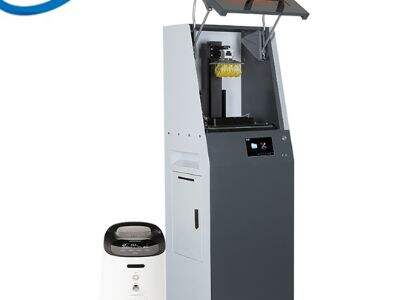For makers, Ceramic 3D printers and Injection Molding are the two scalable types of industrial products. There are pros and cons to both approaches. Explains which one is more suited to simultaneous production of various products. We will assist in understanding the manufacturing capabilities of ceramic 3D printers, comparison with injection molding, ceramic 3D printer cost, pros and cons of injection molding.
Ceramic 3D Printers: How Effective Are They?
How are ceramic 3D printers modernizing product manufacturing? These printers utilize a specialized type of clay and form intricate designs extremely delicately. In mass producing, ceramic 3D printers can print multiple copies of the same product together. This enables manufacturers to produce large quantities of products rapidly. On top of that, a ceramic 3D printer can create a whole variety of objects, such as plates, vases, jewelry, and sculptures.
(Ceramic 3D Printing vs. Injection Molding)
Injection molding has been one of the most widely used process for making products. It is based on melting material and pouring it into a mold. Injection molding is very quick, but does not allow for many different designs. Whereas ceramic 3D printers can make nearly any shape, injection molding excels with products that are visually identical and the same size. Setting up injection molding is also costly and time consuming so isn’t ideal for short runs of products.
How Much Do Ceramic 3D Printers Cost to Operate?
ceramic printer can be more cost-effective than injection molding when we discuss costs. While ceramic 3D printers can cost more initially than non-ceramic 3D printers, the cost of product creation is less. That's because ceramic 3D printers have more efficient methods of creating items, which make them cheaper and waste less material in the process. Also, they require less curing than the injection molding process, making them a better machine to manufacture many products.
Pros and Cons of Injection Molding
Despite some limitations with injection molding, there are some key benefits. One major positive is that it operates quite quickly. Once the mold is created, manufacturers can easily produce thousands of products in a short span of time. However, injection molding works well for making otherwise identical and similarly sized objects, so it is ideal for large production runs. But it can be expensive to establish, and design adaptations can be challenging and costly. Injection molding is also less versatile than 3d print ceramic , complicating the creation of intricate designs.
What is the Best Sign Maker for This Sort of Thing?
So, what is the best way to make lots of products? There are pros and cons for both ceramic 3D printers, and injection molding, and it really comes down to what the manufacturer is looking for. ceramic 3d printer are best suitable for creation of small batch products or unique designs. This is why they are a popular choice because they are inexpensive, adaptable, and effective. Injection molding, however, is ideal for making high quantities of similar appearing products. It is very fast and resource-efficient and has been around in the manufacturing industry for many years.
To sum up, ceramic 3d printer and injection molding for ceramics both have a valid role in product manufacture. Each method has advantages and limitations, and the right one depends upon what the manufacturer requires. Therefore, manufacturers should consider the pros and cons of each method to ensure they choose the best method for the best products at the best price point.

 EN
EN
 AR
AR
 BG
BG
 HR
HR
 CS
CS
 DA
DA
 NL
NL
 FI
FI
 FR
FR
 DE
DE
 EL
EL
 HI
HI
 IT
IT
 JA
JA
 KO
KO
 NO
NO
 PL
PL
 PT
PT
 RO
RO
 RU
RU
 ES
ES
 SV
SV
 TL
TL
 IW
IW
 ID
ID
 SR
SR
 SK
SK
 SL
SL
 VI
VI
 ET
ET
 HU
HU
 TH
TH
 TR
TR
 FA
FA
 MS
MS
 GA
GA
 CY
CY
 BE
BE
 IS
IS
 MY
MY

